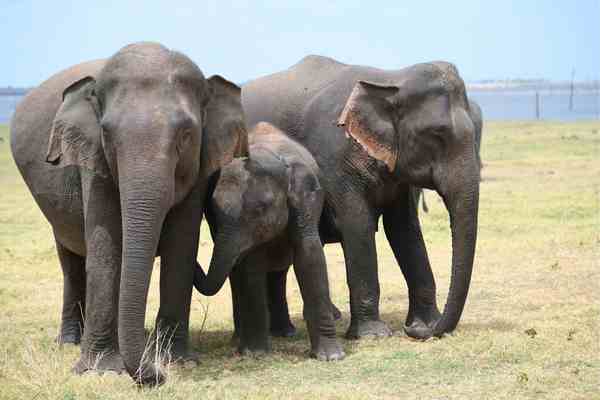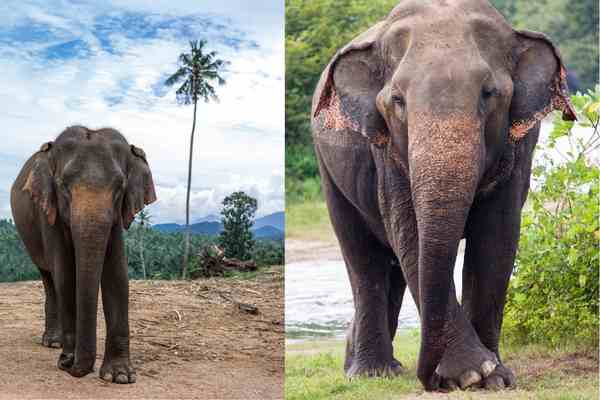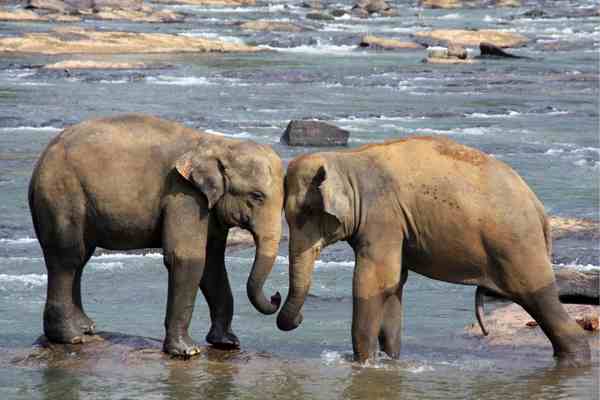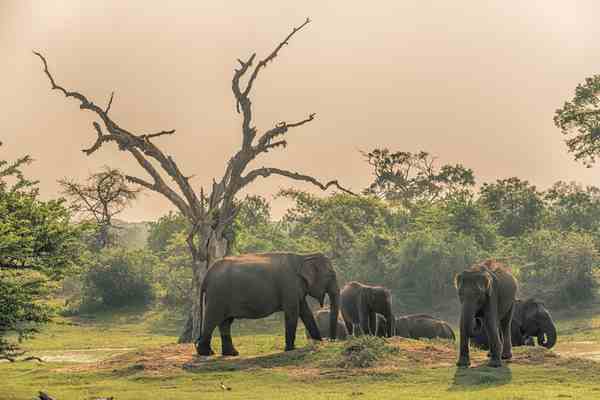Sri Lankan Elephants: History, Cultural Significance, Tourism, Endangered Status, and Unique Characteristics – By Nadeeka – eLanka

The Sri Lankan elephant is a subspecies of the Asian elephant (Elephas maximus maximus) that is native to Sri Lanka, an island country in South Asia. Sri Lankan elephants are considered one of the three recognized subspecies of the Asian elephant, along with the Indian elephant and the Sumatran elephant.
Sri Lankan elephants are smaller in size than Indian elephants, with males typically weighing between 2,500 to 5,500 kg (5,500 to 12,100 lbs) and females weighing between 1,800 to 2,700 kg (4,000 to 5,950 lbs). They have relatively short, stocky legs and a rounded head with small ears. Sri Lankan elephants are known for their high-domed heads and the presence of a single “finger” at the tip of their trunks, which they use to pluck grasses, leaves, and other vegetation.
Sri Lankan elephants have a long and rich history that dates back to ancient times. Elephants were highly valued in Sri Lanka for their strength, intelligence, and usefulness in transportation, agriculture, and war.
In ancient Sri Lanka, elephants played a significant role in the kingdom’s economy and military power. They were trained for various tasks such as carrying heavy loads, plowing fields, and providing transportation for the royal family. Elephants were also used in battle, and were highly regarded for their ability to charge through enemy lines and create havoc on the battlefield.
During the colonial period, elephants in Sri Lanka were hunted for their ivory, and their habitats were destroyed by human settlements and agriculture. The population of Sri Lankan elephants declined significantly as a result, and the species was declared endangered in the late 20th century.

The Sri Lankan elephant is considered an endangered species due to habitat loss, fragmentation, and human-elephant conflict. Conservation efforts are underway to protect these majestic creatures and their habitats, including the establishment of protected areas, elephant corridors, and anti-poaching patrols.
Sri Lankan elephants are popular for several reasons, including:
- Cultural significance: Elephants have a long history of cultural significance in Sri Lanka, and have been featured in art, literature, and religious practices for centuries. In Buddhist traditions, elephants are seen as sacred animals, and are often depicted in paintings and sculptures.
- Tourism: Sri Lanka is a popular tourist destination, and many visitors come to see the country’s natural beauty, including its wildlife. Sri Lankan elephants are a major attraction, and visitors can often see them in national parks and wildlife reserves.
- Endangered status: As an endangered species, Sri Lankan elephants are a symbol of conservation and environmental protection. Efforts to protect them and their habitats have gained attention and support from around the world.
- Unique characteristics: Sri Lankan elephants have several unique physical characteristics, including their high-domed heads and the single “finger” at the tip of their trunks. These traits make them distinct from other elephant subspecies, and add to their appeal for animal lovers and conservationists.
The Sri Lankan elephant has a significant cultural importance in Sri Lanka. Sri Lankan culture is deeply rooted in Buddhism, and elephants have played a significant role in Buddhist traditions for centuries. The elephant is considered a sacred animal in Sri Lanka, and is often depicted in art, literature, and religious practices.
In Buddhist mythology, elephants are associated with wisdom, patience, and strength. The Buddha himself is said to have been born from the womb of an elephant in a previous life, and is often depicted with an elephant as a symbol of his wisdom and compassion.

Elephants also play a central role in the annual Esala Perahera festival, which is one of the most important religious festivals in Sri Lanka. During the festival, a procession of elaborately decorated elephants, accompanied by drummers and dancers, winds its way through the streets of Kandy, the ancient capital of Sri Lanka.
The Sri Lankan elephant is also featured in Sri Lanka’s national emblem, which depicts a golden lion holding a sword in one paw and a stalk of rice in the other, surrounded by four stylized leaves of the Bo tree (sacred fig tree), and four majestic tusker elephants standing back-to-back. The emblem represents the strength, prosperity, and cultural heritage of Sri Lanka.
Sri Lankan elephants are a popular attraction for tourists visiting the country. Sri Lanka has several national parks and wildlife reserves that are home to wild elephants, including Yala National Park, Udawalawe National Park, and Minneriya National Park. Visitors to these parks can often see elephants in their natural habitats, grazing, bathing, or socializing with other elephants.
In addition to wildlife parks, there are also several elephant sanctuaries and orphanages in Sri Lanka that offer tourists the opportunity to get up close and personal with elephants. These sanctuaries often have rescued or rehabilitated elephants, and visitors can learn about elephant behavior, help with feeding and bathing, and even take elephant rides.
The Sri Lankan elephant is currently listed as endangered on the International Union for Conservation of Nature (IUCN) Red List of Threatened Species. The species has experienced a significant decline in population over the past few decades, primarily due to habitat loss, human-elephant conflict, and poaching for ivory.

Sri Lanka has one of the highest densities of wild Asian elephants in the world, but their habitat has been significantly reduced due to human activities such as agriculture, urbanization, and infrastructure development. This has led to increased human-elephant conflict, with elephants sometimes raiding farms and villages for food, and causing property damage and sometimes fatalities.
Poaching for ivory is also a threat to Sri Lankan elephants, although it is not as severe as in some other Asian and African countries. However, there have been instances of elephants being killed for their tusks, and the demand for ivory remains a concern.
Conservation efforts are underway in Sri Lanka to protect the remaining wild elephant populations and their habitats. This includes the establishment of protected areas such as national parks and wildlife reserves, as well as programs to reduce human-elephant conflict and promote sustainable land use practices. However, much more work is needed to ensure the long-term survival of the Sri Lankan elephant.







